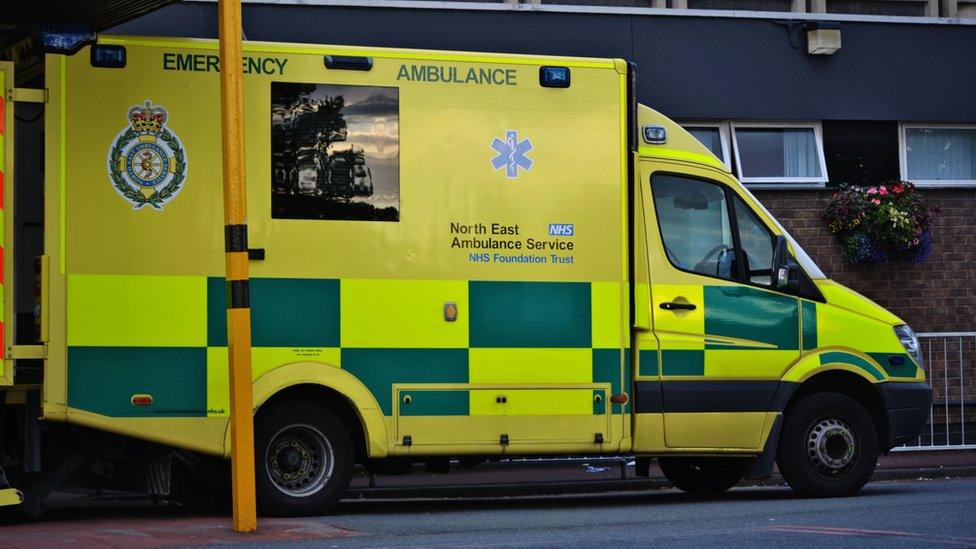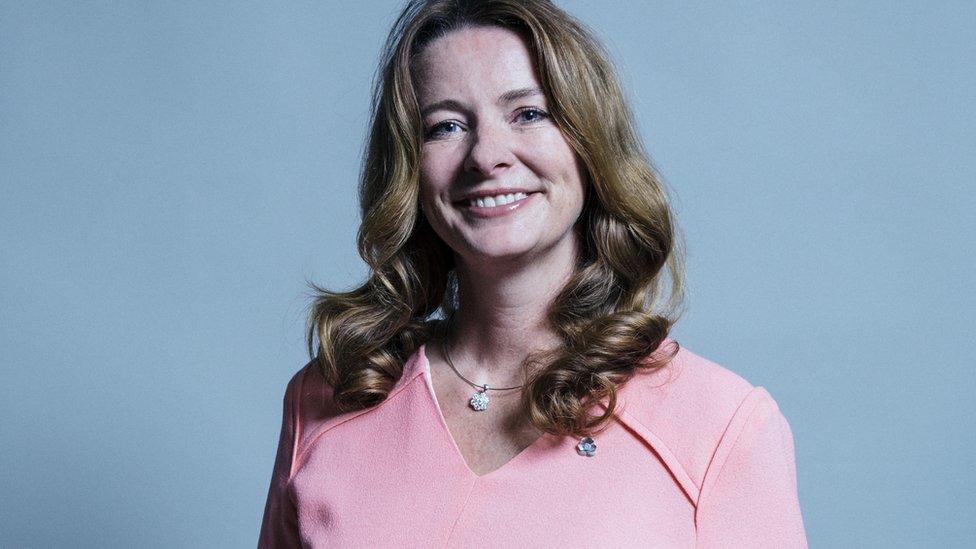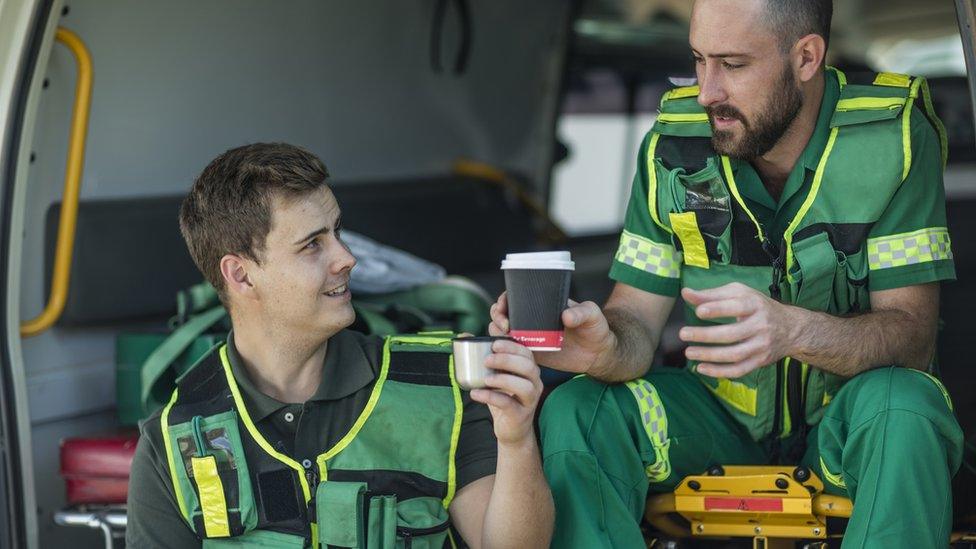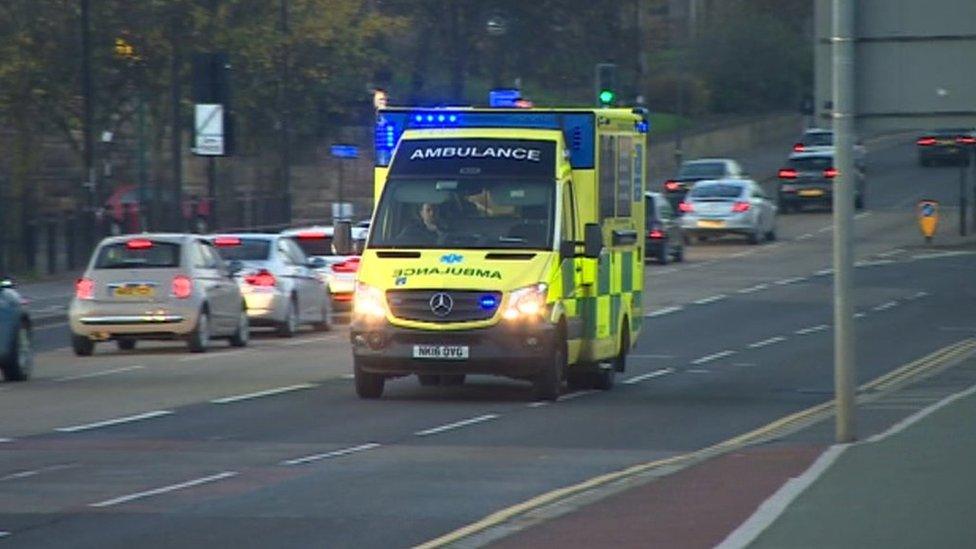North East Ambulance Service: Patients asked to take lift to hospital
- Published

The North East Ambulance Service said its ability to respond to potentially life-threatening calls was "unacceptable"
People with suspected strokes or heart attacks are still being asked to get a lift to hospital because of staff shortages at an ambulance service.
North East Ambulance Service (NEAS) introduced the measure at the weekend because patients were waiting on average for an hour to be seen.
Medical director Dr Mathew Beattie blamed Covid-related staff illness and a jump in demand for the crisis.
Health minister Gillian Keegan asked NHS England to review the situation.
She said there were more ambulance crews in operation "than we have ever had" and that extra funding of £55m had been put in place.
"I've actually asked NHS England to look at that particular case because that doesn't sound to me like that's an acceptable approach," she told Sky News.
"People should be able to get an ambulance if they have a heart attack and that's why we've put that extra funding in place, and why we've been building up our ambulance service over the last couple of years."
An NEAS paramedic, who asked not to be named, said: "We are drowning under the pressure of a perfect storm of increased workload and staff sickness.
"So we understand if the public are terrified about being asked to drive a relative to hospital, it's not ideal, but if that's an option that leads to a swifter outcome for their loved one, that has to be done."
If you can't see the lookup, click here
Dr Beattie said patients in the north-east of England were still at risk and the continuing problem was "unacceptable".
However, he made clear that he had not identified any patient who had been harmed by the measure.
NEAS implemented the highest level of its clinical escalation plan on New Year's Eve.
It said this included alerting patients on calls that were "not potentially life-threatening", and when there was a delay for an ambulance, that they could make an informed choice whether it was quicker and safer for them to be taken to hospital by a relative or friend rather than wait.
Usually the service would move up and down an escalation plan as demand for crews increased and decreased, but the decision was taken due to the dire situation it faced, with one in 12 of its staff and volunteers off work.
'Not returned to normal'
Dr Beattie added: "Under normal circumstances, we would move up and down our clinical escalation levels reactively as each point is triggered or demand reduces.
"The measures we took over the bank holiday weekend were implemented because we have seen activity fluctuating dramatically with surges in demand.
"This was an incredibly difficult decision to take, but when patients are waiting an average of an hour for an ambulance that should be responding within 18 minutes, there is a risk for them coming to harm if they cannot get to hospital quickly."

Health minister Gillian Keegan said extra funding had been put in place
Following a review on Tuesday, the NEAS has returned to using its regular escalation plan.
Dr Beattie said: "Our performance has not returned to normal and it is still taking us too long to get an ambulance to patients, unfortunately due to this patients remain at risk, which is unacceptable.
"Where it is safe we will continue to ask patients to make their own way to hospital, however we would never ask anyone to drive themselves to hospital with a life-threatening illness."

Follow BBC North East & Cumbria on Twitter, external, Facebook, external and Instagram, external. Send your story ideas to northeastandcumbria@bbc.co.uk, external.
Related topics
- Published21 December 2021

- Published20 December 2021

- Published16 December 2021

- Published19 August 2021

